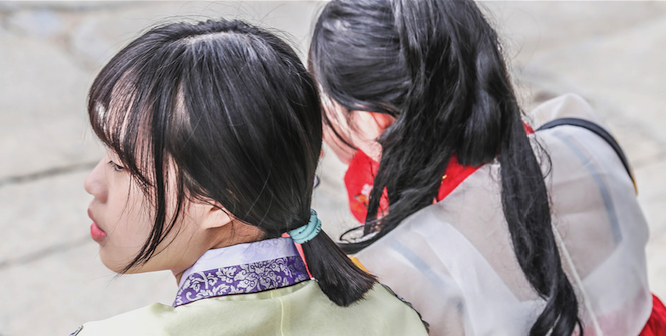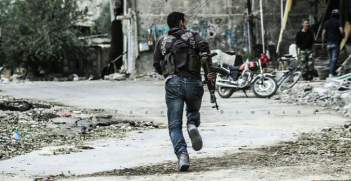Unification and the Myth of South Korean Multiculturalism

The discussion surrounding unification and multiculturalism in South Korea rests on the assumption that the nation is coping effectively with the current changes and is embracing increasing diversity in its society. Is this actually the case?
The importance of ethnic nationalism is not only an underlying identity of the Democratic People’s Republic of Korea (DPRK), but also of the South where it is inhibiting a genuine transition to a multicultural society. This is in part facilitated by a lack of concrete understanding of the concept of multiculturalism and insufficient government policies in safeguarding the rights of foreigners. A United Nations (UN) special envoy in 2014 remarked that South Korea “has a racism problem”, following a week-long mission to the Northeast Asian nation. The majority of these concerns surrounding racism and intolerance rest in the poor work conditions, discriminatory abuse and exploitation that face a large majority of migrant workers, mixed-race Koreans and marriage immigrants.
While both the democratic South and the hermit state to the North recently celebrated 70 years of freedom from Japanese rule, this also marked 70 years of the division of a nation. Much has changed in the decades since the two halves were one, including the identity of South Korean society. In a country that has long defined itself as ethnically homogenous, a demographic change is well underway.
The Brookings Institute fuelled discussion on the complications of unification in a 2015 policy paper that alluded to the rise of race-based conflict that might inhibit social integration. This was owing to North Korea’s “extreme ethnonationalism” and predicted opposition to the South’s growing “multiculturalism”. This suggestion is misguided for a number of reasons, one of which is that South Korea’s perceived multiculturalism is indeed a myth. The demographic changes occurring in South Korean society may better be described as increased “multi-nationalism”. While the country is grappling with this increasing multi-ethnicity, tolerance is lagging behind the fast changes that are taking place.
Sources of discrimination
According to a recent National Statistics Office study, foreign residents and nationals now account for more than 3.4 per cent of the total population. Additionally, with an increase in mixed marriages, the number of multiracial families in South Korea has also risen to more than 4.8 per cent. The number of multiracial children born in Korea is forecast to top more than 40 per cent by 2020. For countries like Australia, where almost a quarter of the population is foreign-born and almost 50 per cent are of mixed-race background, these statistics do not seem striking. However for South Korea, where foreign migration is a recent phenomenon, and being a country which has been characterised by thousands of years of ethnic purity, these statistics are alarming.
However, discrimination is not reserved for migrant workers. Foreign students and Western residents are also experiencing heightened challenges. A significant rise in the number of “Korean only” establishments, particularly in the capital Seoul, has sparked outrage in the foreign community and highlighted the country’s increasing struggle with racial tolerance. The South Korean and North Korean versions of ethnic nationalism converge in regards to historical animosity towards the Japanese and their intense pride in ethnic purity. The question is whether this deep-seated ethnic nationalism will serve to unite or divide the two Korea’s in a post-unification society.
Rather than the North Koreans being unable to accept the multiethnic presence in the South, race-based conflict will more likely originate from their Southern countrymen. Racial discrimination against North Korean defectors is prevalent. In some cases, defectors have even sought re-entry to the DPRK on the basis of mistreatment and discrimination. Significant generational “gaps” in attitude towards unification is also alarming and does not bode well for this trend.
Two Koreas: Two nationalities?
Public opinion data collected by the Centre for Strategic International Studies (CSIS) discovered the rise of a “new” nationalism and identity in South Korea. The surveys found that while many of the older generation exhibit strong support for unification, the younger generation – namely those in their twenties – no longer see the North Koreans as part of the same bloodline. The North Koreans are viewed as belonging to a “different nation”. With an ageing population, and unification not yet on the horizon, this generational gap and new nationalism may be at the forefront of political debate when the time comes to seriously confront the possibility of a single Korea. If South Korea is to fulfill its ambitions to become a leader in global and regional affairs, it must move away from a national identity based on ethnicity.
Tackling the issue
The first changes need to take place in school curriculum and educating the public on racial diversity and living in a multicultural society. With the Park Administration maintaining a tightened grip on education and school curriculum to instill greater nationalistic pride, this may prove to be a slow change. However, where changes are most needed is in creating fair laws that protect the rights and interests of the foreign population in Korea. Social attitude towards unification is, in part, vested in the South Korean’s general discontent with domestic policies, poor labour rights and high unemployment. Adding another 25 million Koreans into this mix may aggravate this malcontent, but an attitude of greater tolerance must inevitably develop. Unless a coherent policy towards multiculturalism is produced, the social conflicts faced by minority groups in South Korea may be reproduced in a reunified Korean state. Despite being vibrant and adaptive to change, if South Korea is to take its place on the world stage it must confront the social biases that are undercutting the transition of its rapidly modernising society.
Luisa Cools obtained a Master of International Development from RMIT and is a former AIIA Queensland intern. She is a recipient of the AIIA’s Euan Crone Asian Awareness Scholarship, which she used to conduct field research in Korea. This article is published under a Creative Commons Licence, it may be republished with attribution.




